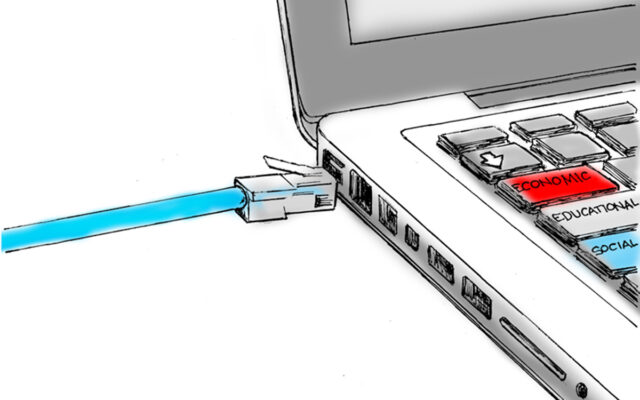
American Rescue Plan includes historic broadband investment for Maine
By U.S. Sen. Angus King, I-Maine
Over the last year, the coronavirus pandemic forced Americans to reimagine the way our society operates. Schools have turned to distance learning; offices have shifted to remote work; medical providers have embraced telemedicine to provide key care. These adjustments have undoubtedly saved lives, but they also exposed a longstanding inequality: The digital divide that leaves millions without access to high-speed broadband and the immense opportunities it provides.
When I first ran for Senate in 2012, I argued that “high-speed Internet is no longer a nice add-on for business; it’s a necessity.” In the time since, the importance of connectivity to high-speed broadband has only grown for business, education, socialization and more.
Sadly, the digital divide continues to grow as more and more rural and underserved communities are left behind. The pandemic underscored these challenges — but through the American Rescue Plan, it also may be the impetus for a transformative investment that brings about much-needed progress.
As a co-chair of the Senate’s Broadband Caucus, I’ve spent years fighting in Washington to prioritize broadband deployment for both economic success and digital equity. I’ve engaged with members of both parties to advance funding, including working alongside a bipartisan group of Senate colleagues on a package we sought to include in the December stimulus package. Unfortunately, those funds for broadband were not ultimately included in the December legislation — but after continued efforts with my colleagues and the Biden Administration, I’m proud to say that we have secured a historic broadband investment in this month’s American Rescue Plan.
Here’s what’s in the package:
First, $10 billion for broadband deployment and infrastructure, digital inclusion and other efforts to close the digital divide. These funds represent one of the most important broadband investments ever made in the history of the United States. Similar to my December proposal with a bipartisan group of colleagues, this funding will be provided directly to states, territories and tribal governments in order to support broadband deployment and a broad set of flexible uses to improve broadband infrastructure, digital inclusion and related efforts to close the digital divide. Final allocations will be determined by the Administration providing they align with Congressional intent in these provisions, but Maine is set to receive roughly $120 million from this fund.
More than $7 billion to expand educational connectivity. The closure of schools has been one of the most devastating impacts of COVID-19, forcing students, parents and teachers alike to adjust to “Zoom school,” but the challenges are even more extreme for students without reliable access to broadband or internet-connected devices. Without access to teachers or the ability to complete assignments — commonly known as the “homework gap” — these students have fallen behind in the past year. I’ve been pushing for funds to address this crisis for the past year through the Emergency Educational Connections Act, and I’m thrilled to say that the American Rescue Plan includes more than $7 billion to help ensure that all K-12 students have home internet connectivity and the necessary capabilities to learn remotely during the pandemic.
It also includes flexibility for state and local governments. Under the CARES Act passed in March 2020, state and local governments were given an explicit list of acceptable uses for federal relief funds, and broadband was not included. This left states and localities in a bind, as many had an immense need for investments in broadband and digital inclusion to help students stay engaged with school or seniors connect with their doctors — but without clear guidance and permission, they were not able to fully capitalize on these funds. The American Rescue Plan clarifies this concern, ensuring that broadband investments are an explicit, eligible use for stimulus funds by states and localities.
At key inflection points throughout American history, federal government has been called upon to make the necessary investments to ensure that our people — all of our people — can access the new technological advances that will define our future. In the 1860s, Abraham Lincoln led the charge to build a basic transportation infrastructure of roads, bridges and canals. For Franklin Delano Roosevelt, it was rural electrification, ensuring that no American community would be left in the dark; under Eisenhower, the Interstate Highway System connected towns across the country by literally paving the way to economic success. The pandemic has made it clearer than ever that this moment is our generation’s time to answer the call, and lay the foundation to ensure that every American can access a high-speed, affordable broadband connection.
The American Rescue Plan is a historic, monumental step in the right direction — but its funds aren’t enough to get the job done. We need to continue to build on public and private investments in broadband infrastructure and this package must be only the start of a bold, sustained investment. I’ll keep fighting to build on this momentum — including advocating for broadband funding in any potential infrastructure package — so we can ensure every single American has access to the economic, educational and social tools that come with a high-speed broadband connection.